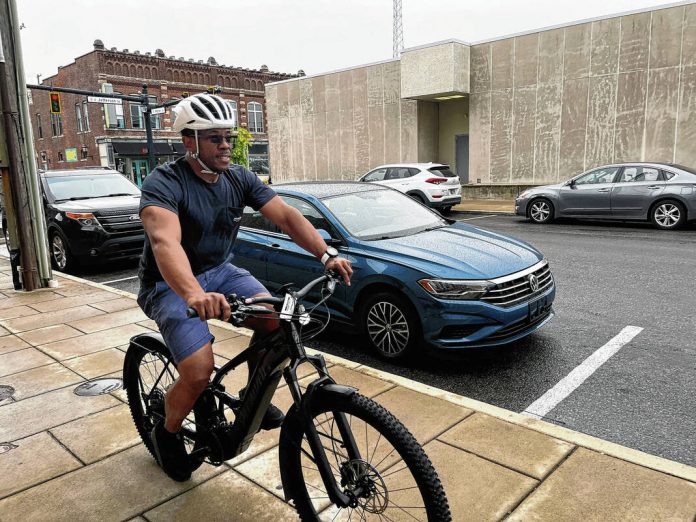Fatal bicycling crashes have reached new highs, but what’s the cost, and what can be done to avoid these cycling catastrophes?
With the COVID-19 pandemic rocking America three years ago, people took up unique hobbies such as knitting, bread-baking or painting. Hobby supply purchasing hit an all-time high, and cycling equipment was no different. According to a study by the cycling advocacy group PeopleForBikes, 10% of American adults took up cycling either for the first time or in a new style, such as mountain biking or indoor cycling.
Since this initial surge of popularity, more and more Americans have become bike riders, even on a local level. However, with more cyclers comes more cycling accidents.
From 2017-2021, Indiana had a reported 4.5 cycling fatalities per one million residents, compared to the national average of 2.7 per one million Americans, according to the League of American Bicyclists.
Locally, the Johnson County Sheriff’s Department reported one cycling incident this year, which occurred last week. The report on the accident indicated that the driver of the vehicle appeared to be intoxicated and rear-ended a cyclist at the intersection of County Roads S. 400 West and W. 100 South.
Franklin Police Department reports show most cycling accidents occur during warmer months, with three out of five incidents reported in the last year occurring in March, June and August. None of the accidents were fatal, and only one incident involved juveniles.
Local bicyclists like Larry Walls with Gray Goat Bicycle Co. said drivers should realize there are more than just cars on the road. On one of his routine 30-mile rides, Walls said a large SUV’s mirror came two inches from him, likely because the driver was on her phone and not paying enough attention to her surroundings.
Meanwhile, during Walls’ time in the military, he was able to ride bicycles with no safety concerns in Europe. Across the pond, Walls said Europe’s infrastructure is perfect for cyclists.
“You could take a bike lane to get anywhere from point A to point B and never see a car,” Walls said. “America just doesn’t have the infrastructure meant for it.”
Walls also said that the curriculum for driver training also doesn’t go far enough in educating drivers about cyclists. Drivers aren’t taught to look out for pedestrians and cyclists, he said.
For parents who may be sending their children out on unsupervised trips, Walls said to equip them with helmets and reflective lights, even during the day.
“People think you only need lights at night, but they’re bright LEDs. Drivers can see them during the day,” he said.
Bicycle Safety Tips from Indiana Code
Unsure of what to do if you see a bicyclist while driving? Look to Indiana’s laws on cyclists:
- From half an hour after sunset to half an hour before sunrise, a cyclist must have either illuminated lamps attached to their bicycle or reflectors that can be viewed from 500 feet away;
- Cyclists should not have items that obstruct them from keeping both of their hands on their handlebars;
- Cyclists must use gestures to demonstrate when turning at intersections;
- Cyclists also are required to ride on the right side of the road;
- When attempting to pass a cyclist, a vehicle must be at least three feet away from the bike at all times.





